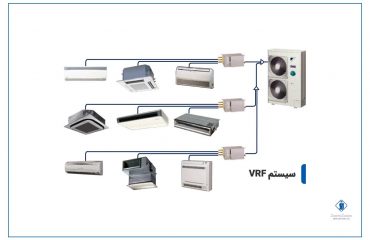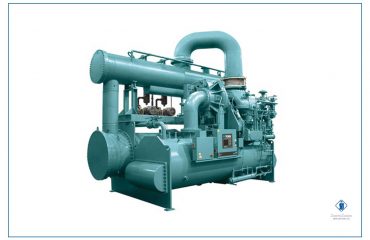What is Duct Split ?!
Ducted Split is a type of air conditioning system that can both cool the ambient air and increase its temperature. Therefore, it can be used in hot and cold seasons of the year. This system is also known as a split channel. Since this system is capable of generating cold and heat and can also be placed in false ceilings, it has been very popular and has become common in buildings with various uses. Duct split is similar to ordinary splits or gas coolers, except that instead of an evaporator or a panel that is mounted on the wall and is surface, a built-in indoor unit is intended for equipment, and ultimately only a vent from inside the room. Is visible.
How is the duct split building and how does it work?
The duct split does not have a complex structure and consists of two parts, condenser and air conditioner. The air conditioner forms the indoor unit of the duct split. There is a drain tray, alternator, impeller and sometimes an evaporator inside this part of the duct split. The job of the air conditioner here is to supply wind, produce hot or cold wind (each such as a coil or evaporator), dehumidify the air, and more. The air conditioner is usually mounted inside the roof. Ducts can connect the air conditioner to other parts of the building, which are the rooms and areas for air exchange.
The condenser section is its outdoor unit and is usually made of the alternator, fan, motor and other equipment. The main part of the work is to adjust the temperature by the duct split on the compressor shoulder. These components enable the compressor to transfer gas refrigerant to the air conditioner. The refrigerant used in the split duct is Freon gas.
Duct split cooling and heating cycle
The cooling cycle is such that in the condenser section, the refrigerant gas is cooled and directed to the expansion valve by means of copper pipes. It is then prepared to absorb ambient heat and transferred to the air conditioner. In an indoor air conditioner or unit, the air heat is captured by a gas refrigerant and the environment is cooled. This cool air is transmitted by the technology inside the indoor unit to the branching channels that are the air travel path. These ducts are responsible for sending cool air through the vents into the desired room space.
The cooling function of the duct split is the same as that of a split or air conditioner, but its heating effect is done in a different way. In this way, the gas refrigerant is heated in the condenser this time and similar to the previous cycle, it is directed through the copper pipes to the indoor unit and the coils in it and heats the air that enters the indoor unit from the room environment. This air, which has already been processed and the temperature has risen, will return to the room through the duct and fan.
Another form of split duct cycle is like a hot water coil. In this way, hot water enters the indoor unit from the package and the engine room, the air in the indoor unit in contact with this hot coil increases the temperature and then enters the room through the duct and valve.
What are the types of duct splits in terms of energy consumption?
There are two types of duct split:
- Normal type or energy consumption with grade B.
- Duct split inverter or power consumption with grade A.
In type A, variable speed compressors are used, thus saving energy. In this form of compressors, the compressor speed decreases automatically as the temperature decreases and the compressor speed increases as it increases. In fact, the inverter compressor is considered to be a somewhat intelligent compressor and will work in accordance with the required capacity and needs of the user and his desired temperature. In contrast, conventional Type B compressors will operate at a constant speed and speed anyway, regardless of need or capacity. The result is an increase in electricity consumption.

 English
English  فارسی
فارسی 



